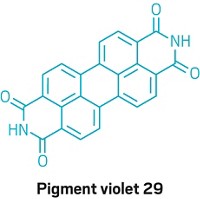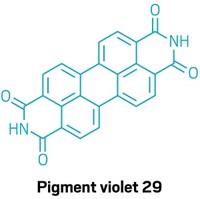Advertisement
Grab your lab coat. Let's get started
Welcome!
Welcome!
Create an account below to get 6 C&EN articles per month, receive newsletters and more - all free.
It seems this is your first time logging in online. Please enter the following information to continue.
As an ACS member you automatically get access to this site. All we need is few more details to create your reading experience.
Not you? Sign in with a different account.
Not you? Sign in with a different account.
ERROR 1
ERROR 1
ERROR 2
ERROR 2
ERROR 2
ERROR 2
ERROR 2
Password and Confirm password must match.
If you have an ACS member number, please enter it here so we can link this account to your membership. (optional)
ERROR 2
ACS values your privacy. By submitting your information, you are gaining access to C&EN and subscribing to our weekly newsletter. We use the information you provide to make your reading experience better, and we will never sell your data to third party members.
Chemical Regulation
Violet colorant poses risks to workers
Revised EPA assessment finds risks from chronic inhalation of pigment violet 29
by Britt E. Erickson
October 30, 2020

A violet dye used in industrial carpeting, automobile plastics, inks, and other products poses unreasonable risks to workers under several use scenarios, the US Environmental Protection Agency announced Oct. 29 in a revised draft assessment. The assessment is in marked contrast to the agency’s initial version, released in Nov. 2018, which concluded that the dye poses no unreasonable risks to human health or the environment.
The dye, pigment violet 29 (PV29), is one of the first 10 chemicals that the EPA is evaluating under the 2016 revisions to the Toxic Substances Control Act. The agency aims to complete all 10 assessments by the end of this year.
After receiving criticism from a scientific advisory committee and environmental groups about data gaps in its initial PV29 draft assessment, the EPA ordered chemical manufacturers to provide some of the missing information. The agency sent the order in February to Sun Chemical, the only known manufacturer of PV29 in the US, and BASF, which imports small amounts of the chemical. The EPA sought data to help characterize inhalation exposure and solubility.
The additional information, which includes particle size, solubility, and workplace dust monitoring data provided by Sun Chemical, significantly changed the outcome of the EPA’s risk estimates. Under several conditions of use, inhalation of small particles of PV29 poses unreasonable risks of lung impairment in workers who are chronically exposed, the EPA concludes in the revised assessment. Consumers using watercolor and acrylic paints containing PV29 incur no unreasonable health risks, the agency says.
The EPA is accepting public comments on the revised draft PV29 assessment for 30 days. It will also identify experts to peer review the evaluation.





Join the conversation
Contact the reporter
Submit a Letter to the Editor for publication
Engage with us on Twitter